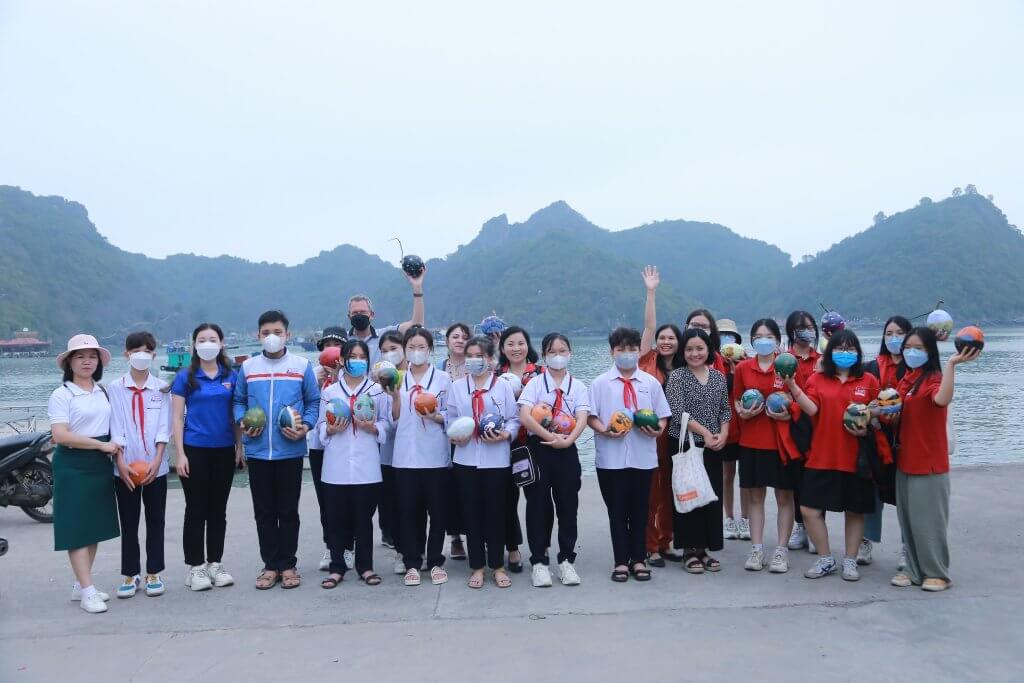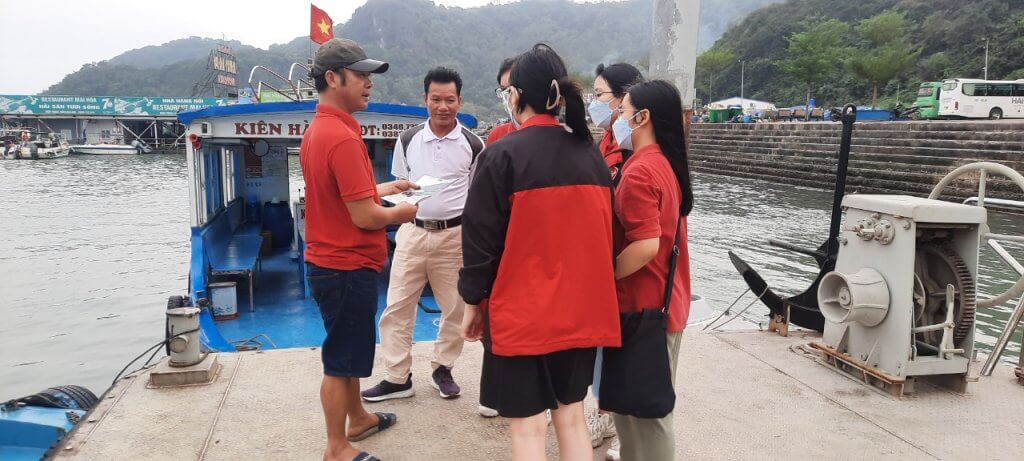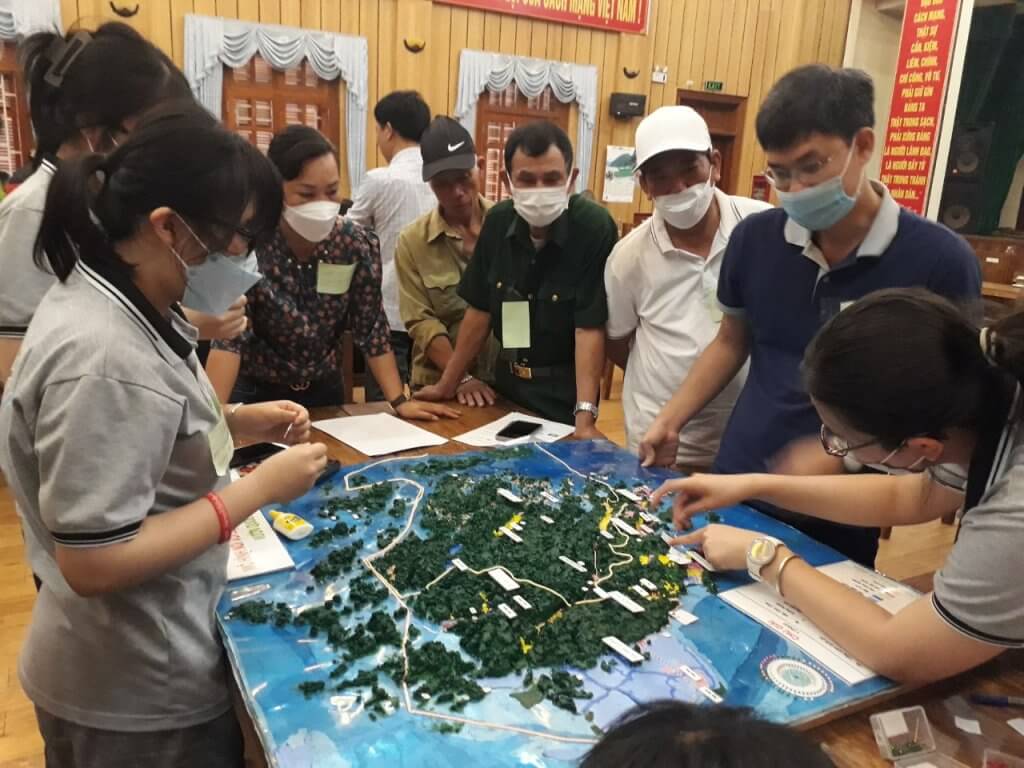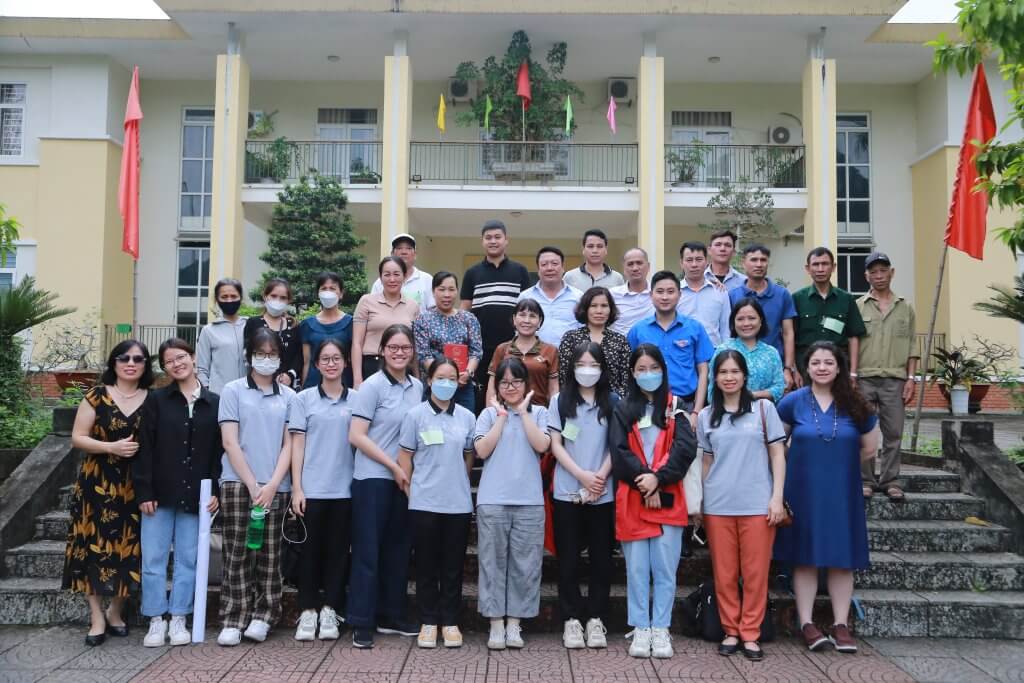A report written by 10th-grade Geography student Nguyen Bao Tran
Having participated in the Field Trip to Cat Ba Island in April 2023 as part of the 3SIP2C Project helped us gain very good experience and many valuable and practical lessons. 3SIP2C (Sources, Sinks and Solution for the Impacts of Plastic on Coastal Communities in Viet Nam) is a multidisciplinary project carried out by researchers from the United Kingdom and Viet Nam. The objective of the project’s recent trip was to gain a better understanding of the sources, transport routes, and accumulation sites of plastic waste on Cat Ba Island. This can help coastal communities address plastic waste issues on the island and in Viet Nam as a whole. To help us understand more about the island’s geography and resources, before embarking on the actual trip, the group of 10th-grade students majoring in Geography participated in making the 3D model of Cat Ba Island. During the process, we encountered many difficulties, but these challenges also helped us to improve our teamwork skills and unity. We also gained new and interesting knowledge about it by cutting, drawing, and pasting the island pieces. This experience helped us become familiar with different types of maps, how to orientate, get to know new people, and most importantly, cultivate patience, meticulousness, and solidarity.
We could not have completed this model without the enthusiastic guidance and help of our teachers (Mrs Hoang Thi Thu Huong – Head of the Geography Department, Mrs Vu Kim Chi, Mr Giang Van Trong, Ms Do Thi Nhung, Mrs Inna, and Mr Tom – members of the 3SI2PC project) and the students of the Faculty of Geography, Hanoi University of Sciences. After 6 months of completing the 3D model, with the support of the project, a group of 10th-grade Geography students from the High School for Social Sciences and Humanities had the opportunity to visit the island. We participated in the Coconut Hunt activity, which was designed to understand the movement of coconuts in the sea and help validate simulations of the pathways of plastic waste and particles in the bay. This activity also saw enthusiastic participation from students of Viet Hai and Ha Sen primary schools, as well as Ha Sen Secondary School (Cat Hai). 50 coconuts were painted by the students and labelled with the information and contact details of the project. We released the coconuts from 2 locations in Lan Ha Bay (Cat Ba). After 7 days, the project received several calls from local people who had found the coconuts. The farthest location a coconut had been found was at the Tra Ly estuary, Thai Binh, which is 58 km from the initial release point. This proved that if we litter indiscriminately, the waste will flow into the sea and travel long distances, causing pollution in many places.

Students from Social and Humanities Science Highschool (in red) participating in coconut release with Cat Ba Island local students
To continue the study of plastic waste on the island, we conducted a small survey with local people and tourists. Through this survey, we understood that everyone was very well aware of the importance of protecting the island’s environment. Almost all households handled waste neatly, and the roads are very clean, especially in tourism and service areas. Waste on the island mainly comes from the sea or unintentionally from economic activities. The most surprising and impressive thing was the “Green Sunday” campaign. Every weekend, everyone participates in cleaning up waste, from villages to towns. Schools also have a recycling campaign for some of the waste, which they carry out on a monthly basis. Ha Sen Secondary School had pots made from plastic bottles or planters made from discarded tires.

Students interviewed locals on Cat Ba Island about plastic waste issues
On the second day of the trip, we had the opportunity to present our findings and interact directly with people from 6 communes and towns in Cat Ba National Park. Working with the 3D model, residents discussed and identified the locations of waste accumulation in their commune areas. After the workshop, we gifted the 3D model of Cat Ba Island to the National Park Management Board. It will be displayed prominently at the National Park Center and help introduce tourists to Cat Ba National Park. After seeing the model, many officials and locals expressed appreciation for the students’ efforts and skills in creating it.
Through this exchange, we learned more about the significant waste issues on Cat Ba Island. Despite the awareness and determination of the local people, there are still a significant number of tourists and other people dumping waste indiscriminately on this island. For example, Gia Luan commune needs to process plastic waste that flows in from Ha Long Bay, while Tran Chau commune is heavily affected by the new landfill – Cha Cha. The entire island’s waste is treated in Cha Cha landfill, which results in enormous amounts of waste and difficulties to sustain daily and economic activities in Tran Chau commune. In Phu Long commune, there is a mangrove forest, where plastic waste gets stuck to the trees, but there is still no thorough processing activity. On the other hand, the water supply issue for local people got a significant improvement. The island has a system of freshwater lakes that provide water for the residents.

Local people discuss the livelihood and plastic waste issues in their commune using the 3D model

Students along project experts, local people, and Cat Ba National Park officials
We also visited Cat Ba National Park Environmental Science Centre, where we saw rare and local wildlife specimens up close. The project team elevated our field trip experience by including some time to enjoy the sea. We had a great time playing on Tung Thu Beach in the evening. Returning to Hanoi, all of us cherished the moments on the island and realized that everyone learned many new things.
Participating in the plastic waste project was very beneficial because it enabled us to learn from Vietnamese and foreign experts, travel, enhance our environmental awareness, and obtain international certificates that will supplement our scholarship applications. We, the 10th-grade Geography class, of the High School for Social Sciences and Humanities, would like to express our sincere gratitude to the teachers and the 3SIP2C project for creating many beneficial and interesting learning opportunities for us, helping us to gain a greater understanding of environmental protection!